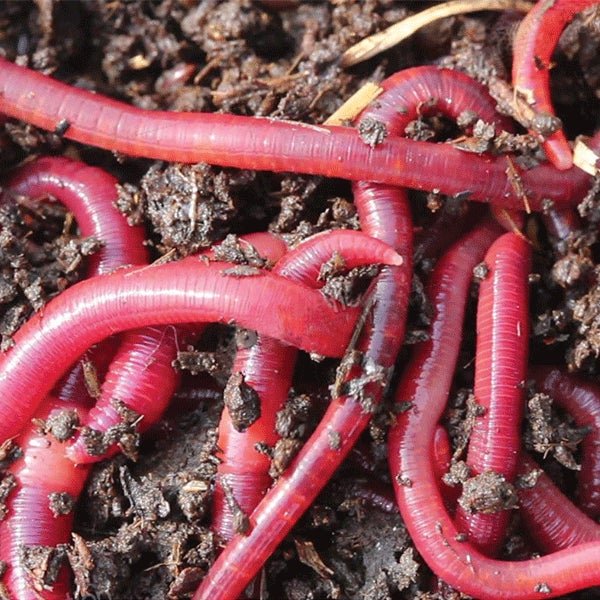Active red wigglers: Recycle waste effectively
Active red wigglers: Recycle waste effectively
Blog Article
Using Red Wigglers for Effective Organic Waste Disposal
These worms not just boost waste decomposition but likewise produce valuable worm castings, which can substantially boost dirt health. Recognizing the nuances of setting up a successful worm bin and preserving an optimum environment is essential for optimizing their advantages.
Advantages of Making Use Of Red Wigglers
Among the most compelling advantages of making use of red wigglers for natural waste disposal is their impressive efficiency in composting. These worms, scientifically referred to as Eisenia fetida, are particularly adapted for breaking down organic materials, enabling them to process waste up to twice their body weight every day. This quick disintegration not just increases the composting procedure yet additionally creates nutrient-rich worm spreadings that significantly boost dirt top quality.
In addition, red wigglers add to a decrease in garbage dump waste. By drawing away organic products from garbage dumps, they assist lessen methane discharges-- a potent greenhouse gas. This environmental advantage is essential in the fight versus environment modification.
Furthermore, red wigglers are low-maintenance and can thrive in various settings, making them accessible for both amateur and knowledgeable composters. Their capability to recreate quickly ensures a steady populace, assisting in continuous waste handling.
Establishing Up Your Worm Bin
Creating an effective worm container is essential for taking full advantage of the benefits of composting with red wigglers. The very first step is choosing a proper container. A bin made of plastic or timber, with a capacity of 10 to 20 gallons, is excellent. Make sure the bin has ample drain holes to stop excess wetness, as red wigglers thrive in a moist but not soggy environment.
(red wiggler worms for sale)Next, prepare the bed linens product, which serves as the worms' habitat and food source. The container must be put in a dark, temperature-controlled area, preferably in between 55 ° F and 77 ° F, to preserve worm activity.
Once the container is established, introduce the red wigglers, permitting them to accommodate to their brand-new atmosphere. It's essential to keep track of moisture degrees and temperature routinely. A well-maintained container will not just support the health of the worms yet likewise help with reliable decay of organic waste. By following these guidelines, you can produce a flourishing ecosystem that adds to lasting waste monitoring.
(red wiggler worms for sale near me)
What to Feed Red Wigglers
An understanding of the proper diet regimen for red wigglers is essential for keeping a healthy and balanced worm populace and enhancing composting performance. Red wigglers thrive on a varied diet regimen that largely contains natural products. Suitable food resources include vegetable scraps, fruit peels, coffee grounds, eggshells, and shredded paper. These things not just supply crucial nutrients yet likewise contribute to the wetness equilibrium within the worm container.
It is crucial to stay clear of certain foods that can harm the worm populace. Red wigglers ought to not be fed meat, dairy items, oily foods, or refined items, as these can bring in bugs and produce undesirable odors. red wigglers. Additionally, citrus fruits and hot foods must be minimized, as their level of acidity can be damaging to worms
To promote ideal food digestion, food must be chopped right into smaller items, assisting in quicker break down and intake. Introducing food in moderation is additionally essential; overfeeding can bring about anaerobic conditions and bring in unwanted parasites. Keeping an eye on the worm container for food intake rates will aid guarantee that red wigglers are obtaining a sufficient diet regimen while maintaining an effective composting environment. Appropriate feeding techniques are vital for fostering a flourishing ecological community within the worm bin.
Keeping Your Worm Environment
A well-maintained worm habitat is vital for the health and wellness and efficiency of red wigglers. To make sure ideal conditions, it is important to check temperature, moisture, and oygenation within the worm container (red wigglers).
Dampness degrees must be kept consistent; the bed linen needs to be moist yet not soggy. An excellent rule of thumb is to preserve moisture at roughly 70% to 80%. If the bedding becomes also wet, it can lead to anaerobic problems that are unsafe to the worms. Including dry carbon-rich products, such as shredded paper or cardboard, can aid soak up excess dampness.

Making Use Of Worm Castings in Gardening
Rich in nutrients and helpful microbes, worm spreadings offer as an extraordinary organic fertilizer for gardening. Produced with the digestion procedures of red wigglers, these spreadings contain an array of vital nutrients, including nitrogen, phosphorus, and potassium, which promote durable plant growth. Unlike synthetic fertilizers, worm spreadings supply a slow-release device, ensuring that nutrients are available to plants over an extended duration, thereby decreasing the risk of nutrient leaching and soil depletion.
In addition to vitamins and mineral material, worm castings enhance dirt structure and oygenation, enhancing moisture retention and water drainage. The microbial life existing in worm castings helps to subdue virus and advertises a healthy dirt environment, further profiting plant health and wellness. When integrated into the dirt or utilized as a leading dressing, worm spreadings can considerably boost seed germination prices, origin advancement, and overall plant vitality.
For optimal outcomes, gardeners must use worm castings at a price of 1-2 inches per square foot, blending them right into the soil or including them into potting blends. Overall, utilizing worm spreadings is an environmentally friendly strategy to enriching soil fertility and guaranteeing flourishing yard atmospheres.
Final Thought

Report this page